An organic kitchen garden is where you grow your food organically, such as herbs, vegetables, and fruits, for use. Kitchen farming promotes better health in urban areas. It is a pleasure to harvest vegetables on windows, balconies, and vertical walls; any such space can be used for a kitchen garden. Not only is homemade produce delicious and healthy, but when your vegetable plot thrives properly and genuinely, it can also reduce your grocery bills. Let’s check out how to start organic kitchen gardening below.
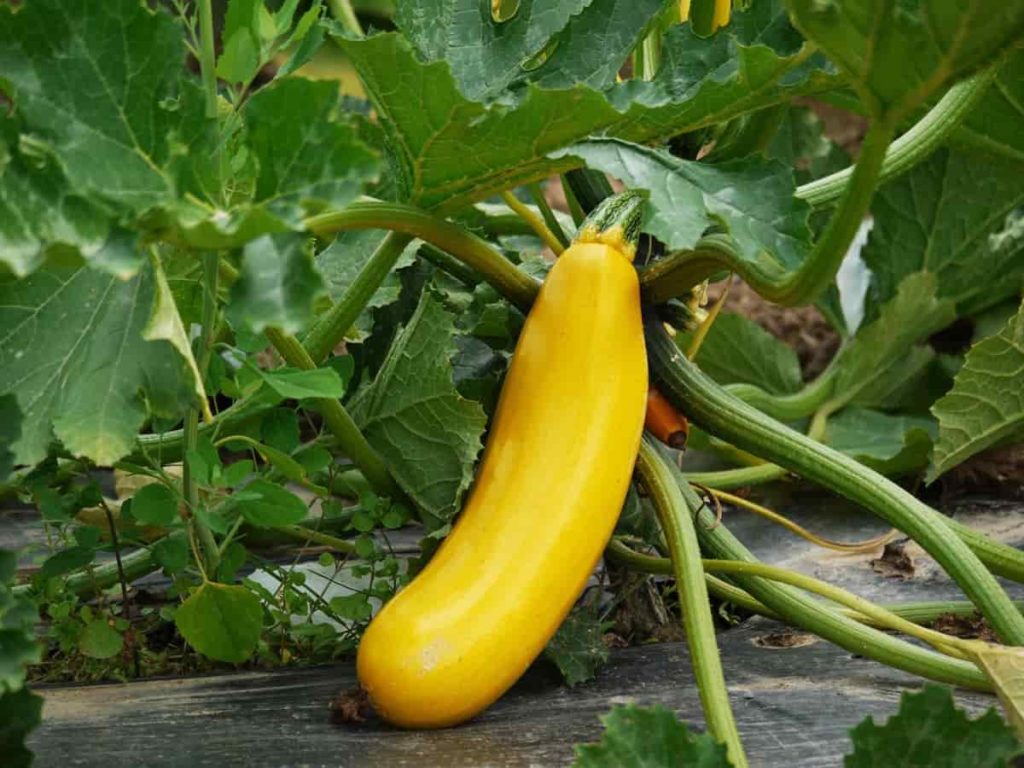
The kitchen is the holy place from which everything comes out for our language. The kitchens are designed to do the cooking, mixing, and blending experience useful. However, many chefs and cooks have difficulty obtaining the herbs and spices often used in various recipes. There are different ways to grow vegetables in your backyard, but the perspective remains the same when planning the best garden plants. You want to understand the plot and climate to know what you can grow successfully.
Why is it called a kitchen garden?
A kitchen garden includes vegetables, fruits, herbs, and leafy vegetables that can be used immediately for cooking. You can make the kitchen garden more visual and practical by growing some edible flowers. The kitchen garden is usually compact enough to provide the family with a moderate supply of fresh produce without waste. Organic gardening does not use any artificial fertilizers or pesticides.
The food prepared is 100% pure, made from homemade ingredients, completely fresh, and easy to pocket. Organic kitchen gardening can be done in small apartments, especially with the popular concept of terrace gardening. It does not need a large piece of land. As with any garden, growing food in your home requires preparation and planning. If homeowners are lucky enough to have a balcony, they should ensure it gets adequate sunlight.
If not, they should choose another window area as their gardening area. The organic kitchen garden is a great step toward building an environmentally conscious community; as many residents as possible in high-rise buildings should be encouraged to take up the practice. If every homeowner decides to grow a specific vegetable, a group of people will grow almost all the necessary products in their community together.
Components for starting organic kitchen gardening
- Seed and propagation pots, containers, or seed trays, but you can buy a plug from your local garden center or order online.
- Grow quality compost and grow bags with added fertilizer. If you do not add it yourself, well-rotted fertilizer may be a good option.
- Watering can
- Gardening Tools: Compost Scoops, Dibber, Sectors, Gloves
- A range of containers of different sizes is preferably plastic because they are lightweight and easy to move.
Benefits of organic kitchen gardening
You will find more home-grown seasonal vegetables and herbs free from harmful pesticides. What is done in your diet is better controlled when growing it yourself, making it a healthy option. Organic kitchen gardening or urban farming provides homeowners with fresh, pesticide-free food and can also be a self-healing process.
The best benefits of a home kitchen garden are that it provides a fresh variety of vegetables free of harmful chemicals that can cause health problems. The importance is that you also reduce the waste that goes into landfills by compiling from kitchen waste at home and helping the environment.
In case you missed it: Organic Farming in USA: Crops, How to Start, A Step-By-Step Guide for Beginners
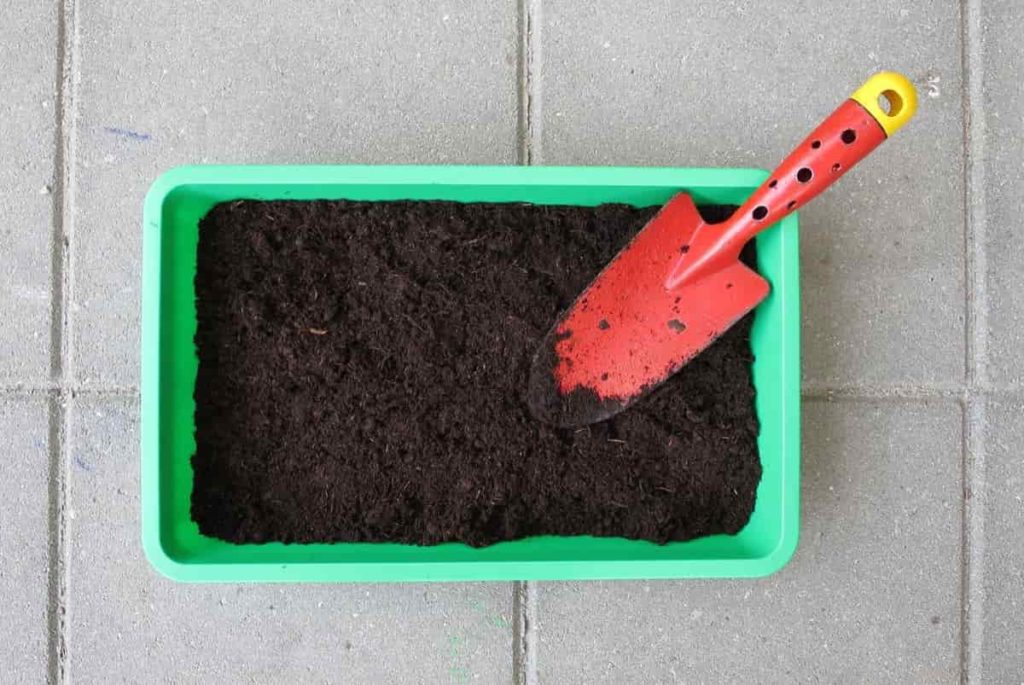
Gardening in the kitchen positively affects our well-being – it is a relaxing activity that can help overcome anxiety Anyone can be creative through recycling and painting and use old pots, containers, plastic bottles, milk cartons, etc., as planters. The home kitchen garden improves the air quality, enhances the place’s aesthetics, and gives a sense of success and happiness. Some other benefits include;
- Kitchen gardening is a healthy way to get the whole family involved in physical activities.
- It helps clean up a lot of air around your home.
- A kitchen garden goes a long way in improving the environment around you.
- You can get fresh vegetables and fruits whenever you want.
- You know exactly what you are growing.
- It is cost-effective.
- You have a chance to be healthy.
Choose crops that grow fast
Grow high-yielding plants. It is going to inspire you initially. Choose crops that do not require much care and are less susceptible to pests. Grow plants in a kitchen garden that can give multiple crops and allow you to increase the growing season.
For example, tomatoes will produce many crops during the season, but planting cabbage will give you only one crop. Plants can be harvested regularly, and growing them is a great method to save on expensive, store-bought options. Cut and come varieties of vegetables like Spinach is excellent and easy to grow.
Some places for having your kitchen garden
Backyard – Backyard kitchen gardens are the most preferred area for cultivation because of their easy access to sunlight, water, and other associated elements. The backyard size doesn’t matter because you can go to the kitchen garden. In addition, you will have layers of plants on the walls (also called vertical gardening). It is a real space saver and adds to the overall aesthetics of the place.
Terrace – Terrace is another place to consider having your kitchen garden. Only one issue will get their attention, and you must do extra rounds to get your supplies. Then, the more effort, the sweeter the result.
Window Sill – If you have a problem with space, window sills are just as promising for your kitchen garden. In addition to beautifying the most unusual area, you will have fresh produce.
Pots – If you are going to use pots (soil or plastic) to grow your produce, you need to keep the following two points in mind:
- Proper space or place to help the plants grow
- Pots must have drainage holes
How to start organic kitchen gardening: Steps to start organic kitchen gardening for beginners
Step 1: Start your kitchen garden at the right time
Early spring is ideal for kitchen gardening, but you can certainly start planning well in advance. Decide on the size of the plot for the kitchen garden you want. Make sure you maintain the extent you can manage. A large vegetable garden with room for everything to grow will take a lot of work, both preparation and maintenance. Small plots with dwarf varieties, mixed yields between flower beds, or planting in containers will work best if you don’t have much time for gardening.
In case you missed it: Top 40 Ways to Increase Crop Yield/Production: For Vegetables, Fruits, Flowers, Herbs, Tips, Ideas, and Techniques
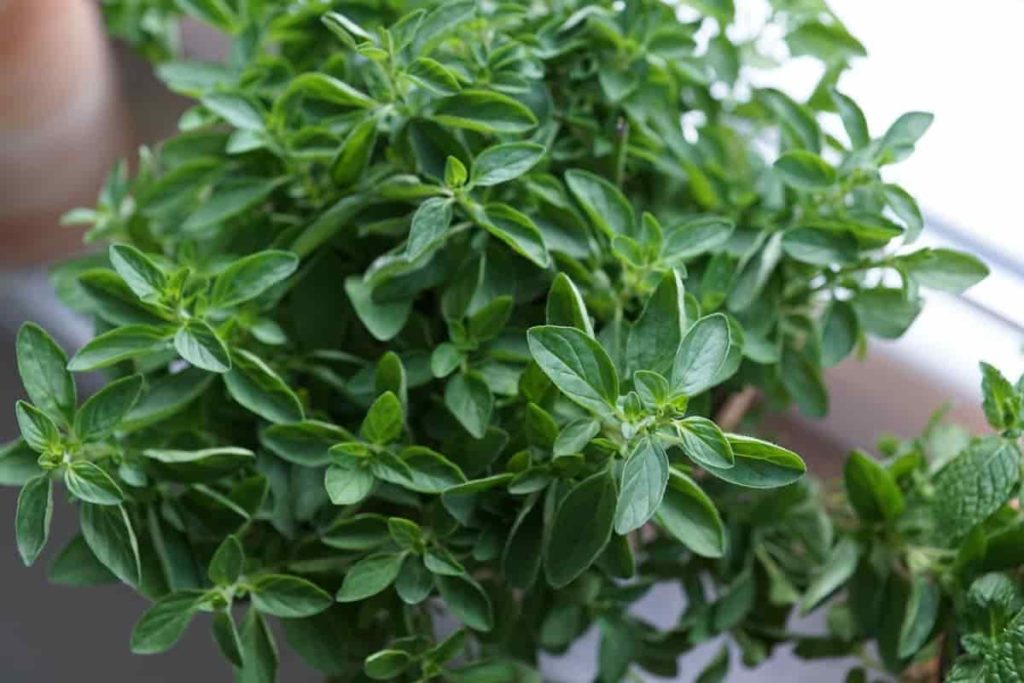
Step 2: Site selection for growing plants in kitchen gardening
The site selection is the perfect place for a kitchen garden with plenty of sunshine and a specific area that is partially shaded so that you can grow all your shady herbs and vegetables there. It must have good drainage and quality soil. One way to check drainage is to check the area after rain.
If pits are formed, it is not suitable for kitchen gardens, but if the water seems to seep in or flow out. Choosing a flat area free of roots and rocks makes it easier to compile and prepare the soil before planting. If the soil lacks good drainage, consider making high beds that allow plants to grow above ground level.
Step 3: Assess the sunlight
The critical requirement for growing edible plants is sunlight. Each plant is a small factory that converts solar energy into nutrients for us through its leaves and fruits. Observe which room or wall is the maximum and how it moves from morning till sunset. Your kitchen does not have to be in the garden kitchen. It can be on a small balcony, a window grill, or even in the living room. Sometimes the wall stays in the sunlight for a long time. In such cases, consider a vertical herb garden.
Step 4: Make your soil
The important step in kitchen gardening is to make your soil (nutrient-rich soil), which has abundant and diverse microbial life that helps in the healthy growth of plants. It is easy to prepare, and the results are effective. Start with what you have. Just turn your kitchen waste into a resource. The most important step in organic gardening in the kitchen is nutrient-rich soil.
It is made from soil, which has abundant and diverse microbial life that helps in the healthy growth of plants. It is easy to prepare, and the results are very effective. You can start with whatever you have—no need to buy mud or other equipment. Just turn your organic kitchen waste into a resource. Sprinkle some red soil in the pots from time to time. Make a mixture of compost and red earth in a ratio of 1:1. You can collect the top layer of soil from the garden.
In case you missed it: Avocado Gardening, How To Start, Tips, and Ideas
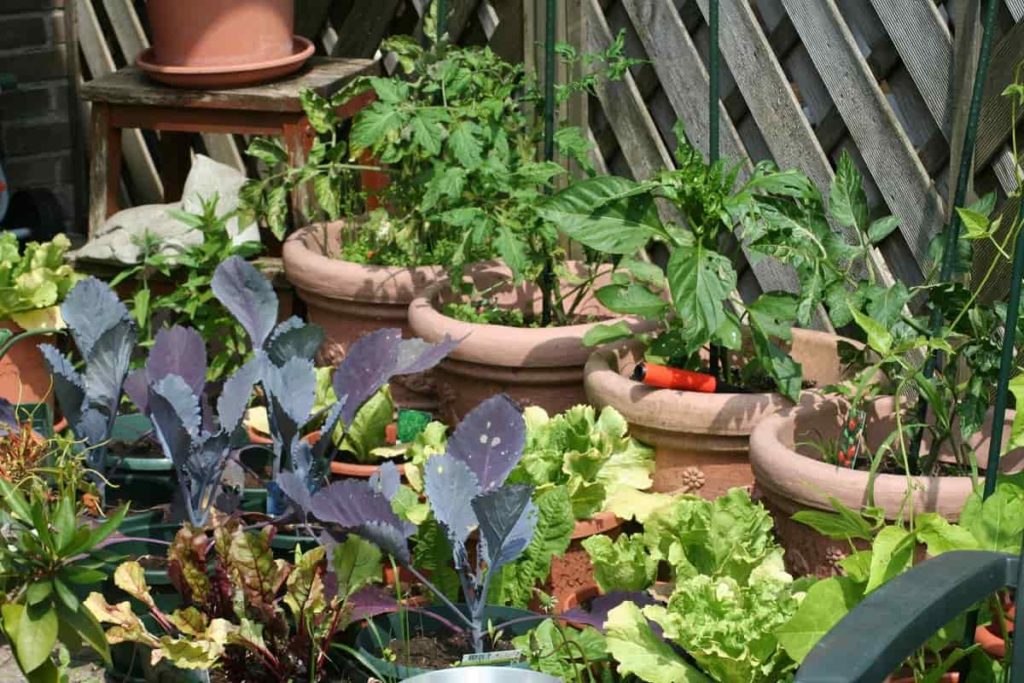
You can also get seeds from any nursery in your city. Always go for open-pollinated seeds, not hybrids. You can start by growing different vegetables, such as curry Leaves, Mint Leaves, Basil, Peppers, Lemongrass, and Spinach. They are the easiest to grow. They do not need too much sunlight; the plant can be kept indoors or near a window.
Step 5: Start a small garden
Choose hybrid and heirloom seeds and seedlings for planting. Start identifying the types and varieties of vegetables you like according to your taste and which grow best in your kitchen garden. Initially, it is best to start with easily grown herbs and vegetables such as Mint, Basil, Parsley, Lettuce, Spinach, Tomato, Pepper, Eggplant, Beans, Cucumbers, Radishes, Asian Greens, etc.
Get over the basics of growing these most popular and easily grown vegetables. Start growing edibles that need care like Cabbage, Brussels Sprouts, Onions, Cabbage, Artichokes, Rhubarb, Bitter Melons, Carrots, Melons, etc. For fruit, you will need a grafted plant. Growing them in the kitchen garden is also a great idea.
Step 6: Test and prepare the soil for your kitchen garden
Determining what kind of soil you have will also determine your plans – not only what type of plants you can grow but also what they can grow. If, for example, the soil is heavy, you may want to grow vegetables. Although soil structures can be improved and changed over time, dealing with heavy soils or poor, sandy soils are a difficult battle, and the alternative approach to growing is a sensible one, and ultimately time. Maybe a saving option.
So, to get the best home crops from your kitchen garden, you must ensure that your soil is up to scratch. It is helpful to check the soil’s pH level in your vegetable garden to help you choose crops accordingly. Aerate the soil before fertilizing to make sure the soil is rich in oxygen, well-drained, and allows the fertilizer to be saturated as much as possible.
Step 7: Succession planting
Succession planting can help you improve the productivity of your kitchen garden and provide a steady supply of vegetables.
Work on how to get the best value from the kitchen garden
Grow high-value crops that take up very little space. Tomatoes are very caring and require a lot of water and food, but they grow vertically and produce a lot of fruit. You can also look for different types available in stores – different varieties to minimize your time, space, and money while getting maximum results.
It aims to increase productivity compared to store-bought products and improve taste and value—by exchanging seeds with family and friends. Homemade salad leaves are a cheaper alternative to the supermarket – and less wasteful. Sow cut-and-come-again varieties every few weeks for continuous cropping.
Choose crops that are more expensive to buy than growing them yourself – for example, herb gardens such as Mint, Sage, Thyme, Parsley, and Rosemary. They are easy to grow, and you can harvest them fresh for nine months of the year. Many herbs are perennial and will return year after year. Swiss chard is easy to grow, is plentiful almost all year round, and is not readily available in most supermarkets.
In case you missed it: Kohlrabi Gardening For Beginners, How To Start
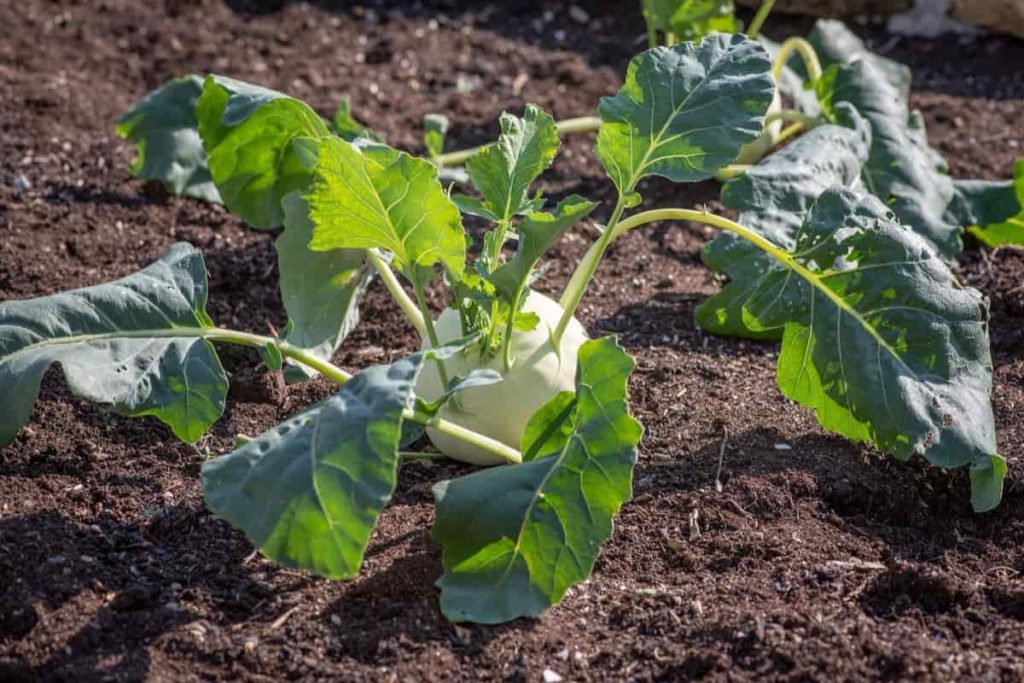
Grow crops that taste fully ripe and fresh from the plot, such as Strawberries. Fruit trees will give good yields once established, and try cordons or spoilers against a sunny fence if space is limited. Choose the types that are not usually found in supermarkets.
Grow a kitchen garden in raised beds
If the soil in the garden is not of good quality, then small vegetable plots with raised beds filled with clay from a local garden are a good option. They provide good drainage, prevent soil compaction, increase soil temperature, and are accessible. The sides of the bed prevented the soil from being washed away in heavy rains and acted as a barrier to insects, such as snails, slugs, and weeds along the way.
You can buy ready-made raised beds for the kitchen garden or make your own raised beds. Old railway sleepers or wooden planks look good and are often used to make vegetable beds. Brick or stone enclosures are long-lasting, while woven willows look rustic but must be replaced every six years. Wooden beds should be covered with black polythene to keep the wood dry and prolong its life.
Start your home kitchen garden with microgreens
Include microgreen in the kitchen garden as your starting point, and add coffee leaves to a healthy salad. Anyone can grow nutritious microgreens such as Wheat Grass, Radish, Fenugreek, Beetroot, or Spinach. Micro vegetables are edible, and herbs are harvested less than 14 days after germination. They have a fragrant taste and are full of nutrients.
Microgreens are about one to three inches long. Growing microgreens requires a shallow container (the larger the area, the higher the yield). Mix the cocoa peat (a mixture of dust and the ends of unusable fiber) or coconut husk, if available, with the soil. Soak fenugreek seeds or wheat seeds in it overnight.
Place an inch of potting soil on the bottom of the container and smooth it out. Scatter the soaked seeds evenly on the ground. Carefully cover the seeds with a thin layer of soil and then sprinkle the soil with water. Micro vegetables will be ready for harvest after 10-12 days.
Maintenance and care for your kitchen gardening
Care of your kitchen garden begins with spacing between plants. Know that you must plant them to have enough space to grow and flourish. Plants that are kept together die because of the moisture each produces. Another tip for maintaining your kitchen garden is to prune the plants well. Do this regularly to ensure healthy production.
For those who don’t know, pruning is the process of cutting dead or withered leaves. It helps to improve the health of plants, so they grow healthier and faster. You can start pruning at any time of the year. The more you cut your plants, the more they will bloom. It is best to use pruners, called clippers, for quick clean cuts.
Vegetables to grow in the kitchen garden
Tomatoes, Brinjal, Onions, Peppers, Okra, Bitter Gourd, Black Pepper, Cabbage, and Cucumbers are vegetables in the kitchen garden.
Herbs to grow in the kitchen garden
Coriander, Peppermint, Basil, and Lemongrass are easy herbs to grow in the kitchen garden.
In case you missed it: How to Grow Lettuce at Home with Seeds and Without Seeds
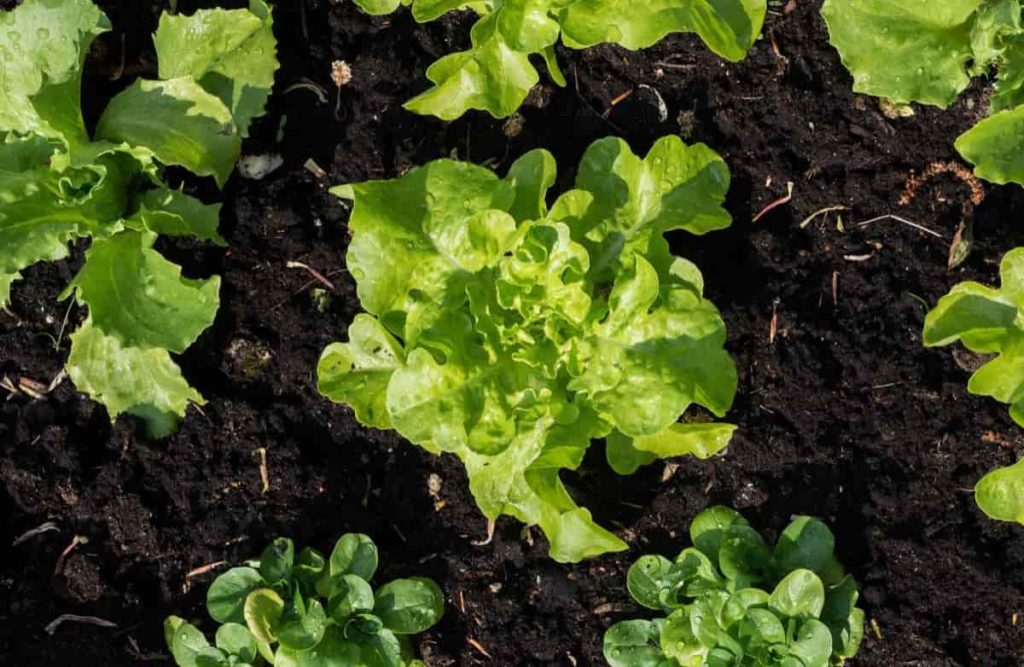
Easy kitchen gardening tips for beginners
- The kitchen garden plants need some care and maintenance. So, start small and initially choose six to eight types of vegetables and then gradually add more types of vegetables.
- Apply the seed about three times the diameter unless written on the packaging. Cover the seeds with soil and water them well, ensuring you do not expose them. Also, do not spray the seeds too close to each other.
- The nutrients in the soil make the plants healthy. Add organic manure from tea leaves or vegetable peels to the soil to improve its quality.
- Do not overwater the plants. It is one of the basics of kitchen gardening that will help protect your plants. Check if the soil is dry and moisten it with enough water to keep it moist.
- One of the kitchen gardening tips is to water the plants in the morning or evening.
- Do not allow water to evaporate in the heat of the day. Slowly water the seeds that are sprouting.
- Prune regularly for strong growth but do not cut over one-third of the plant.
- Remove dry, withered leaves and flowers to encourage rapid new growth.
- Regularly mulch the garden plants by adding grass, dry leaves, paddy straw, etc. Mulch is a weed suppressor and acts as a wall between soil and heat, cold and wind. Mulch helps maintain soil moisture.
Conclusion
People who are health conscious can avoid the harmful effects of chemically prepared foods by adopting the use of organic foods. There are many options of organic food items available in the market that we can use to help reduce the number of pesticides. But a look at grocery bills shows that buying organic can be very expensive. So, an excellent way to continue organic production is to start your organic kitchen garden. The above information is more helpful in starting organic kitchen gardening.
- Economical Aquaculture: A Guide to Low-Budget Fish Farming
- 15 Common Planting Errors That Can Doom Your Fruit Trees
- How to Make Houseplants Bushy: Effective Tips and Ideas
- Innovative Strategies for Boosting Coconut Pollination and Yield
- Pollination Strategies for Maximum Pumpkin Yield
- The Complete Guide to Chicken Fattening: Strategies for Maximum Growth
- Natural Solutions for Tulip Problems: 100% Effective Remedies for Leaf and Bulb-Related Issues
- Revolutionizing Citrus Preservation: Towards a Healthier, Greener Future
- Natural Solutions for Peony Leaf and Flower Problems: 100% Effective Remedies
- Maximizing Profits with Avocado Contract Farming in India: A Comprehensive Guide
- Natural Solutions for Hydrangea Problems: 100% Effective Remedies for Leaf and Flowers
- The Ultimate Guide to Choosing the Perfect Foliage Friend: Bringing Life Indoors
- From Sunlight to Sustainability: 15 Ways to Use Solar Technology in Agriculture
- The Ultimate Guide to Dong Tao Chicken: Exploring from History to Raising
- The Eco-Friendly Makeover: How to Convert Your Unused Swimming Pool into a Fish Pond
- Mastering the Art of Delaware Chicken Farming: Essentials for Healthy Backyard Flocks
- 20 Best Homemade Fertilizers for Money Plant: DIY Recipes and Application Methods
- How to Craft a Comprehensive Free-Range Chicken Farming Business Plan
- Brighten Your Flock: Raising Easter Egger Chickens for Beauty and Bounty
- How to Optimize Your Poultry Egg Farm Business Plan with These Strategies
- Subsidy for Spirulina Cultivation: How Indian Government Schemes Encouraging Spirulina Farmers
- Ultimate Guide to Raising Dominique Chickens: Breeding, Feeding, Egg-Production, and Care
- Mastering the Art of Raising Jersey Giant Chickens: Care, Feeding, and More
- Ultimate Guide to Raising Legbar Chickens: Breeding, Farming Practices, Diet, Egg-Production
- How to Raise Welsummer Chickens: A Comprehensive Guide for Beginners
- How to Protect Indoor Plants in Winter: A Comprehensive Guide
- Ultimate Guide to Grow Bag Gardening: Tips, Tricks, and Planting Ideas for Urban Gardeners
- Guide to Lotus Cultivation: How to Propagate, Plant, Grow, Care, Cost, and Profit
- Agriculture Drone Subsidy Scheme: Government Kisan Subsidy, License, and How to Apply Online
- Ultimate Guide to Raising Araucana Chickens: Breed Profile, Farming Economics, Diet, and Care
- Bringing Hydroponics to Classroom: Importance, Benefits of Learning for School Students
- Ultimate Guide to Raising Polish Chickens: Breed Profile, Farming Economics, Diet, and Care
- Ultimate Guide to Raising Australorp Chickens: Profile, Farming Economics, Egg Production, Diet, and Care
- Silkie Chicken Farming: Raising Practices, Varieties, Egg Production, Diet, and Care
- Sussex Chicken Farming: Raising Practices, Varieties, Egg Production, Diet and Care
- Homemade Feed Formulations for Livestock: Discover Cost-effective Starter to Finisher Feed Recipes